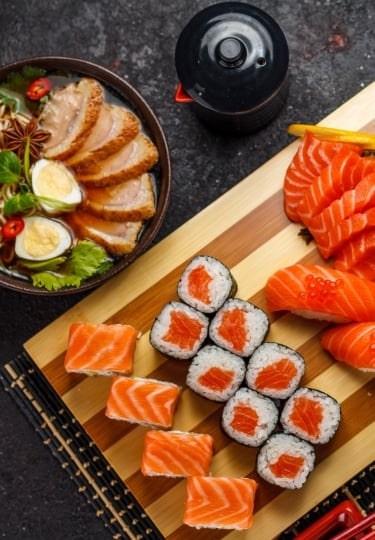Japanese cuisine has deep roots in its indigenous culture, as well as in other Asian cultures, such as China and Korea. So when it comes to what to eat in Japan, choices are many, varied, and exciting to explore as you travel around the country’s five main islands.
Tokyo, Japan’s capital and largest city, has the largest number of Michelin-starred restaurants in the world, which speaks volumes about the quality of the food you’ll find when traveling in Japan.
The Japanese believe that one not only eats with the mouth but also through the eyes, so the appearance and presentation of the food is given the utmost priority.
Feast your eyes—and your tastebuds—with this mouthwatering list of what to eat in Japan on your next vacation.
Sushi and Sashimi
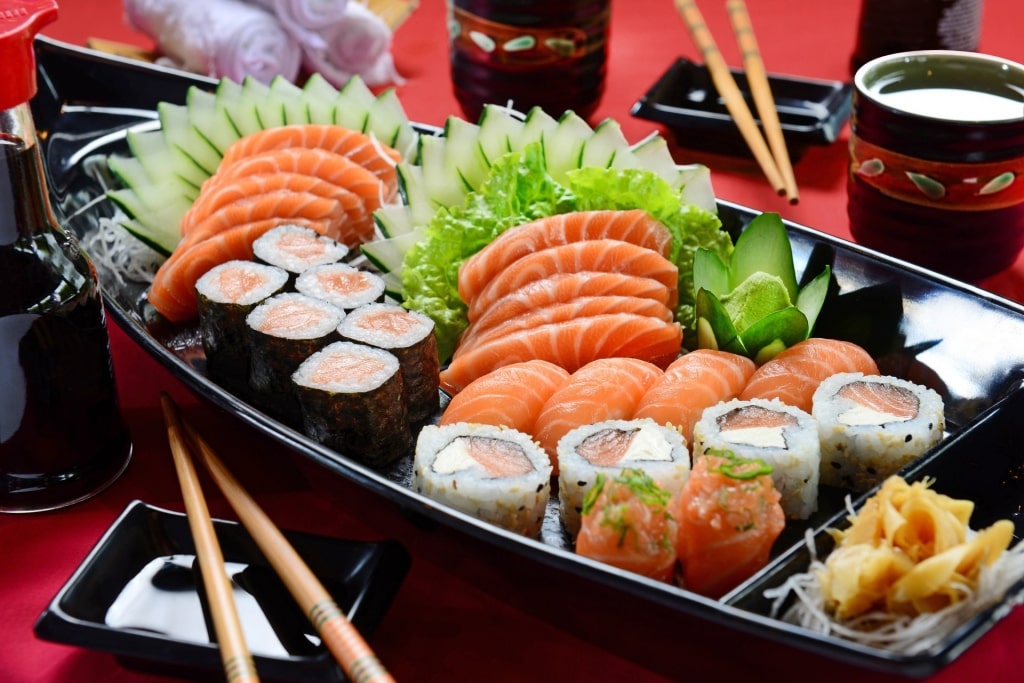
Sushi and Sashimi
Fish and rice are the staple foods of Japan, so it’s no surprise that when traveling there, you’ll find a tantalizing combination of the two rolled up into some of the best sushi in the world.
Sushi, a combination of cooked rice seasoned with vinegar, salt, and sugar and raw fish or seafood that’s rolled in nori (seaweed) or formed into a bar and topped with fish is considered an art form by the Japanese.
Sashimi are thin slices of fresh raw fish or meat served with soy sauce.
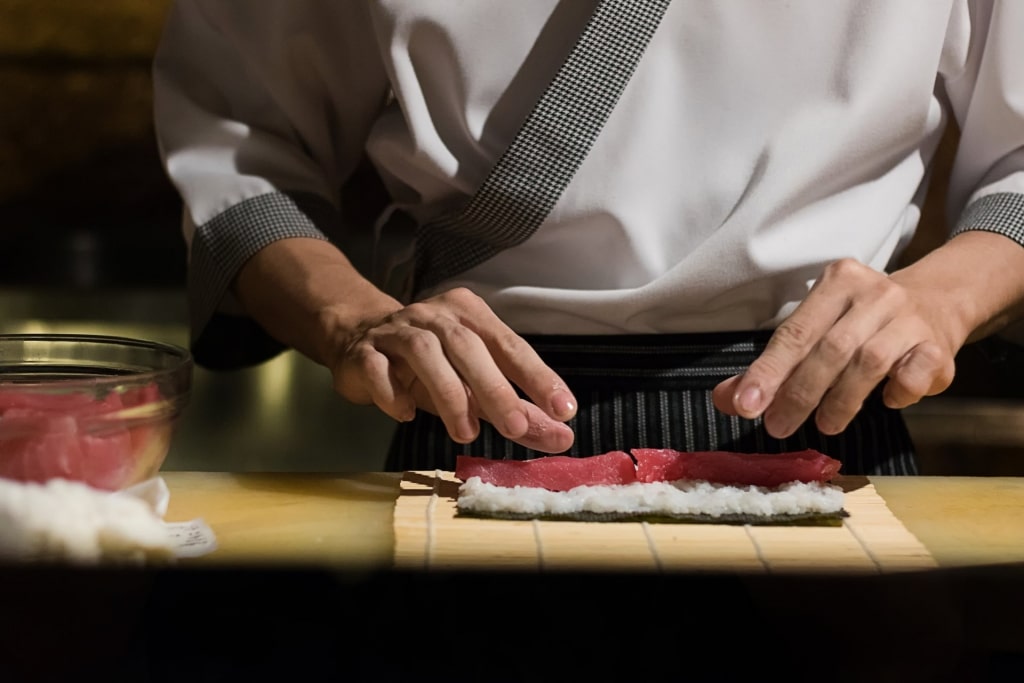
Sushi
The crafting of sushi and sashimi is taken seriously, and a sushi chef studies as an apprentice under a master sushi chef for as long as a decade before embarking on his or her own.
Some of the most popular types of sushi that you’ll find at a sushi bar in Tokyo include:
- Norimaki: the quintessential rolled cylinders with various fillings
- Tekkamaki: tuna roll
- Kappa maki: cucumber roll
- Unagi: broiled freshwater eel with a sweet sauce
- Ebi nigiri: broiled shrimp
- Shimi saba: marinated mackerel
- Toro: fatty bluefin tuna belly
- Akami: top loin of bluefin tuna
- Amaebi: raw sweet shrimp
- Anago: saltwater eel
- Iwashi: sardine
- Uni: sea urchin
- Hotate: scallop
Unsure of what to order at a Tokyo sushi bar? Opt for the first few selections on the list above or a few non-fish options such as tamagoyaki, an egg, and rice omelet sushi, or an unconventional wagyu beef sushi, if available.
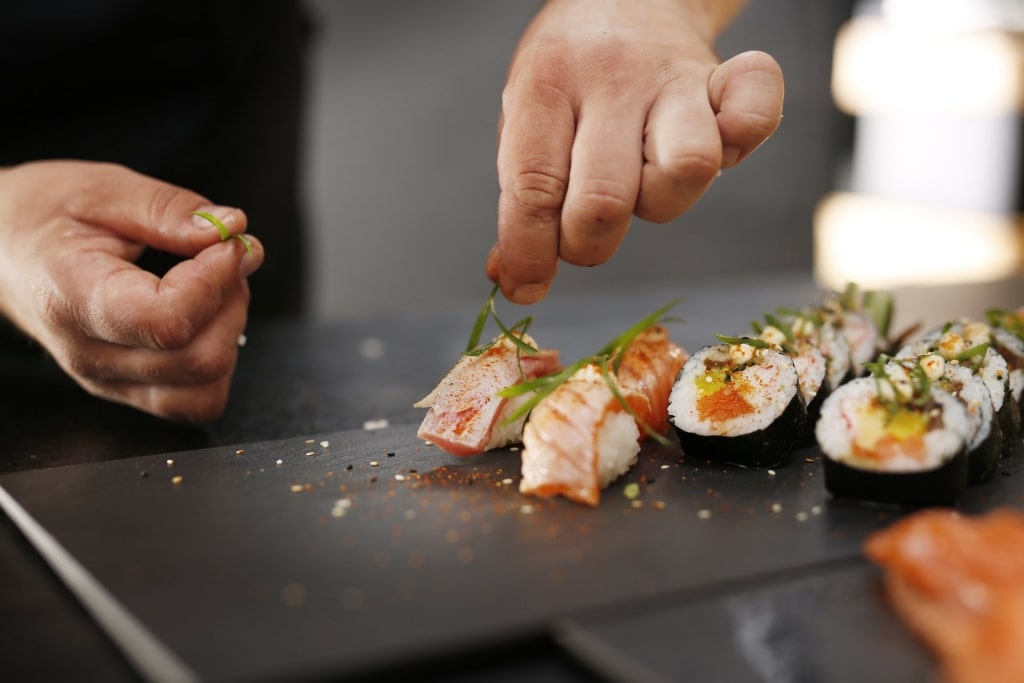
Sushi
If you’re ready for a real Japanese culinary adventure, ask the chef for omakase, which is like a chef’s tasting menu. The chef will happily prepare a sushi meal of a lifetime for you using his or her creativity and expertise.
Also, there’s a simple rule of etiquette to abide by: Eat sashimi with chopsticks, but eat sushi with your fingers in one bite, if at all possible.
Ramen
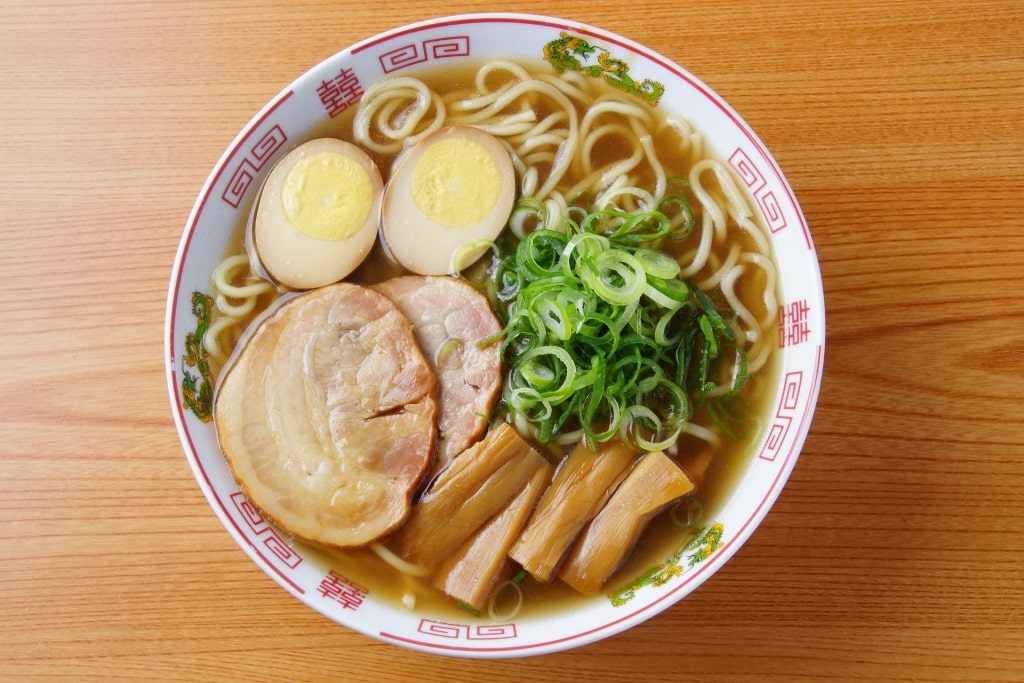
Shoyu Ramen
Another food that Japan is known for is ramen, a treasured dish of noodles and broth found all over the country. In each prefecture, you’ll find versions using unique combinations of ingredients and flavor.
Long, thick, yellow-colored wheat noodles bathed in a clear chicken and soy sauce broth and topped with pork slices, soft-cooked eggs, bamboo shoots, bean sprouts, leeks and seaweed is the traditional and most common Shoyu ramen found in and around Tokyo.
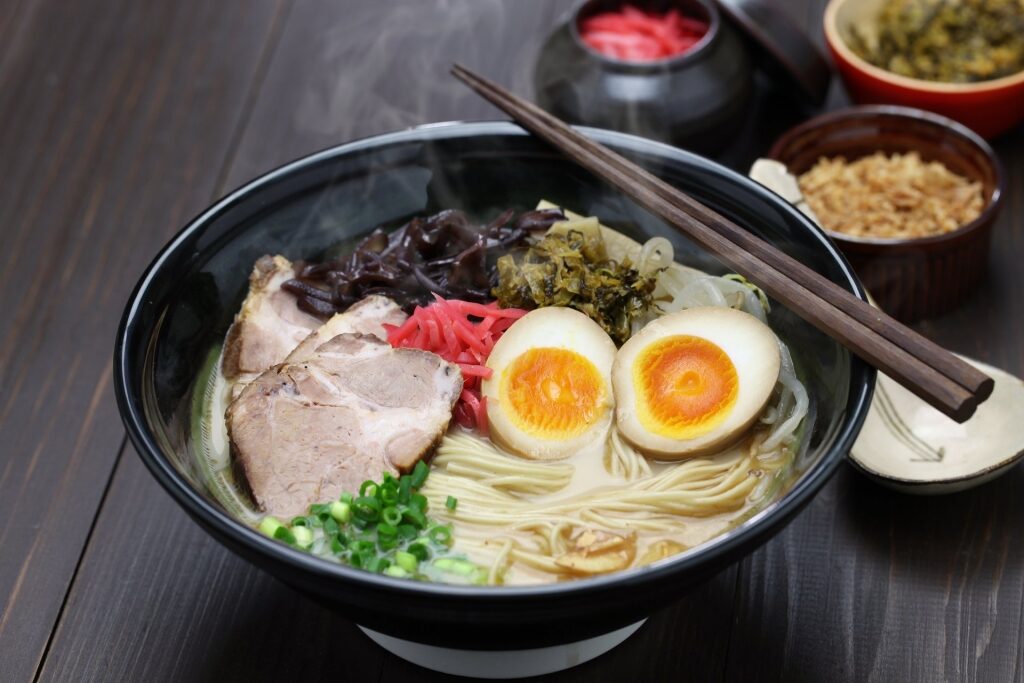
Tonkotsu Ramen
Creamy pork bone broth and exceptional noodles served al dente are why you’ll want to order Tonkotsu ramen, also known as Hakata ramen, one of the most famous ramens and a specialty of Fukuoka, a seaport on the northern shore of Japan’s Kyushu Island.
Try a different version of Tonkotsu ramen in Kagoshima with a broth made from both pork bones and chicken and flavored with shitake mushrooms, dried fish, and vegetables that produce a rich, flavorful, cloudy broth. The noodles can either be very thin and white in the style of vermicelli or a thicker white noodle in the udon style.
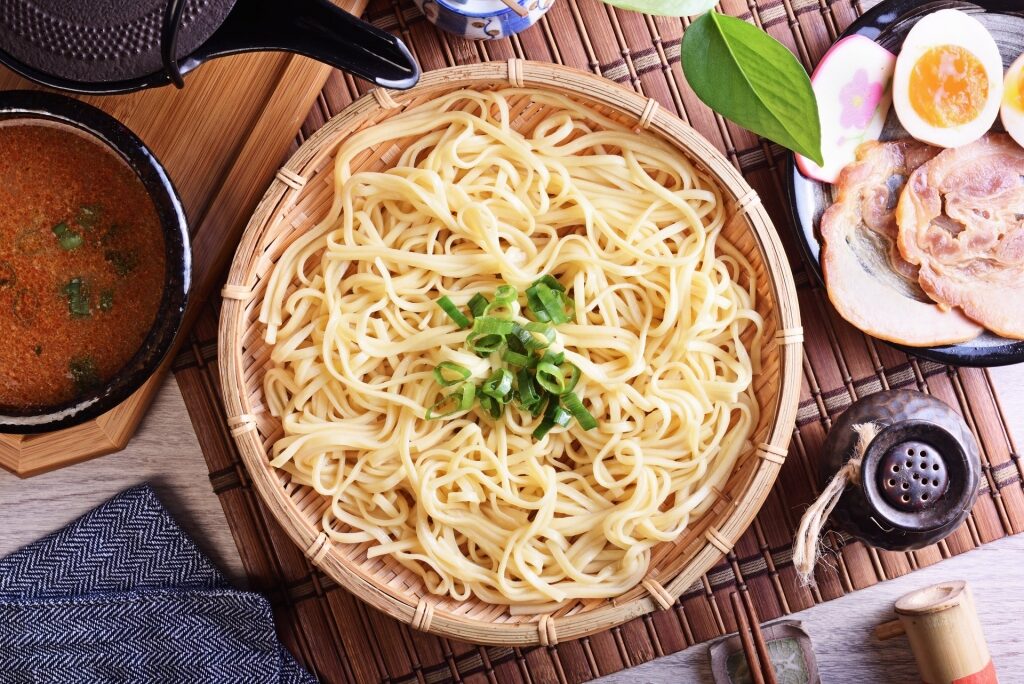
Tsukemen
If you travel to Sapporo, near Otaru, seek out a unique form of ramen, Tsukemen, which is basically a deconstructed ramen. The noodles, extra long and extra thick, are served separate from the broth and dipped into the broth before each bite.
The deconstruction allows for a different ramen experience: the firm, chewy texture of the noodles can be fully appreciated, and the broth itself is more strongly flavored. The toppings, hard-cooked eggs, nori, pork slices, and green onions, can be dipped, if desired.
As with sushi, there’s etiquette to be observed when eating ramen. Sample the broth first. Eat the egg separately from the noodles and broth. Eat fast—ramen is not meant to be a leisurely meal. Most importantly, be sure to slurp your noodles as you eat.
Tempura
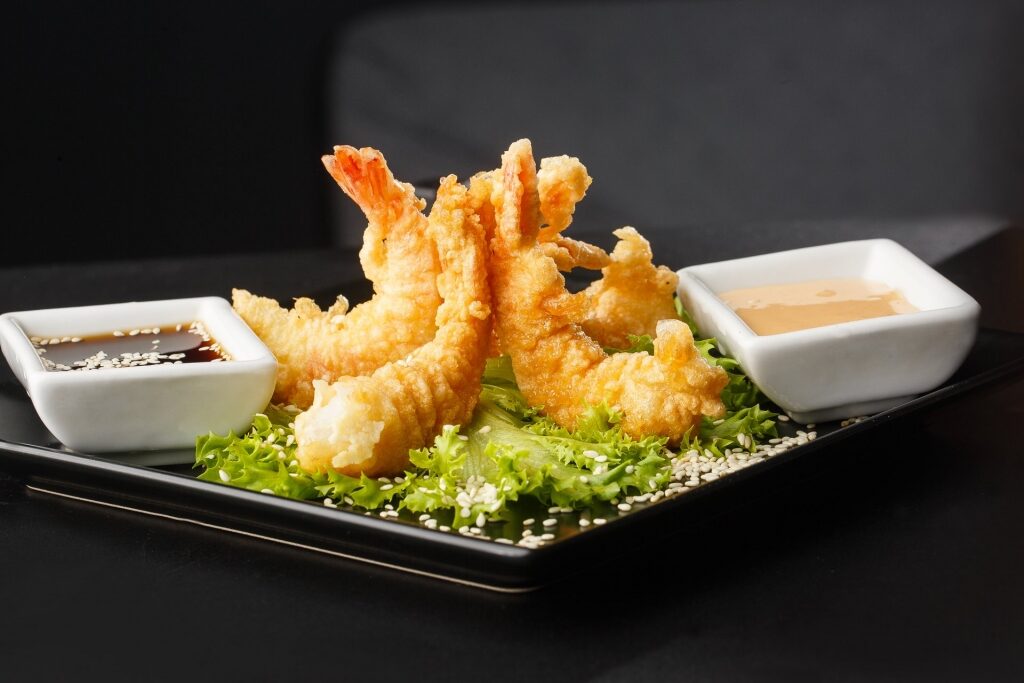
Tempura
Tempura, one of the classics in Japan’s culinary repertoire, is made up of light, golden-colored, and perfectly crisp battered vegetables, seafood, and meat. When you’re traveling in Japan, the best way to experience this culinary wonder is to visit a tempura-ya, or a tempura house.
Tempura at its simplest is the art of deep-frying lightly battered food, and though not invented by the Japanese, it has surely been perfected by them since it was introduced to Japan by the Portuguese in the 16th century. The simple, light batter of flour, water, and egg showcases the fresh and unique quality and taste of each food.
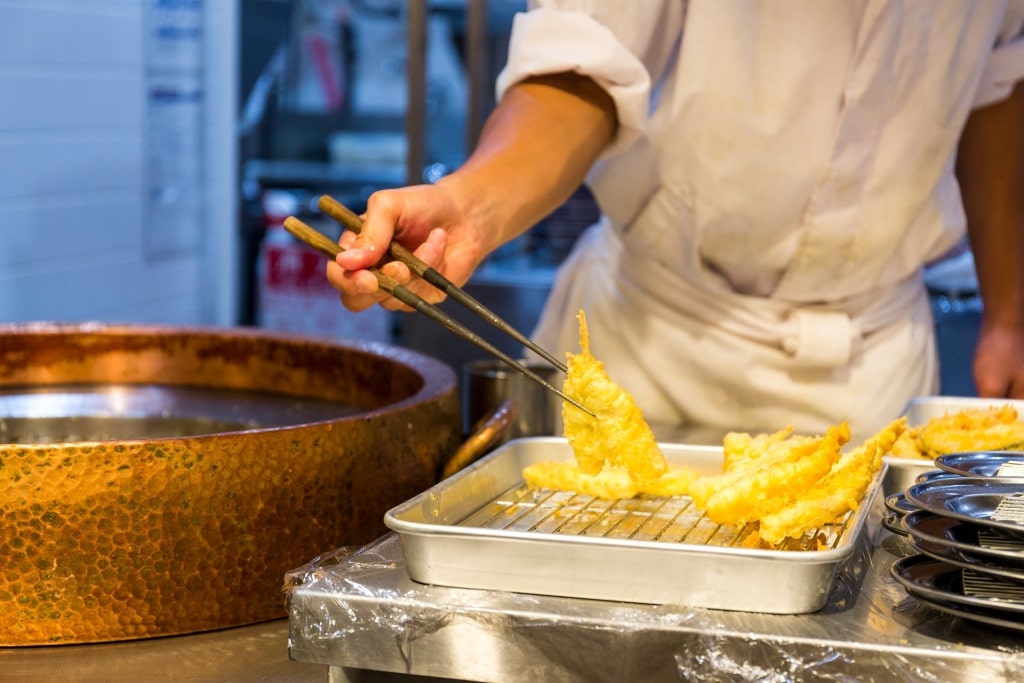
Tempura
When visiting a tempura house, expect a small restaurant with a long, immaculately maintained counter and seating, all the better to see the chef prepare the ingredients, hear the sizzle of your food being quickly and expertly fried to perfection, and take in its heady aroma.
Choose from a seasonal variety of vegetables like half-moons of yellow or orange squash, plump whole green beans, varieties of mushrooms, seafood like prawns, small fish, and pieces of eel, and perhaps pieces of chicken or pork ordered a la carte or as a set meal. Each dish will be cooked to order and presented on a separate plate.
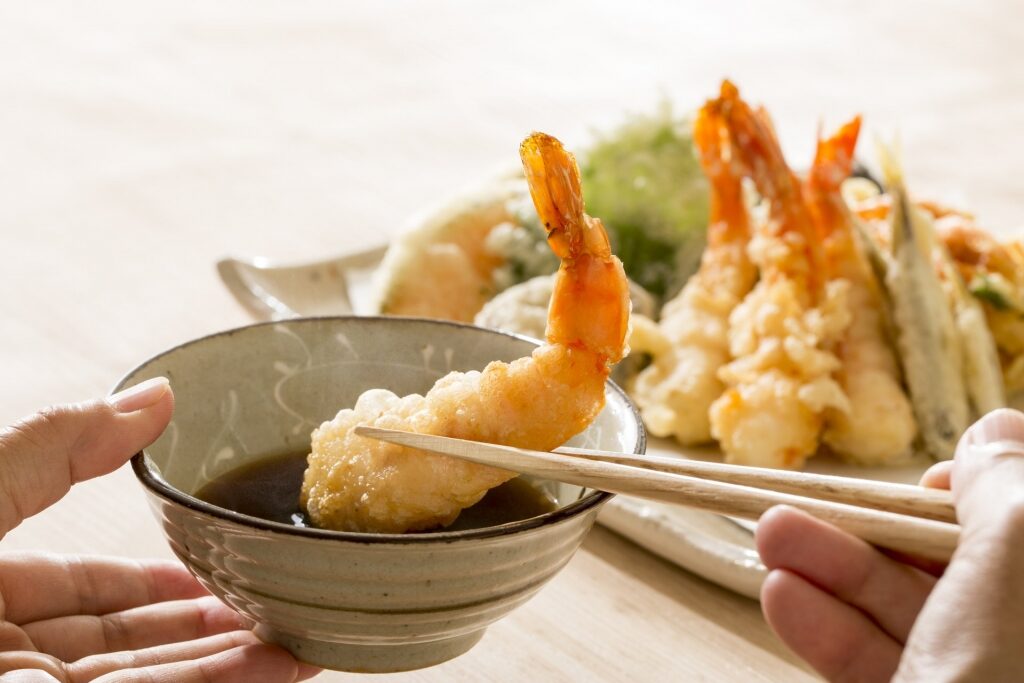
Tempura
The chef will time each dish to your eating pace, and it’s best to eat each dish while still hot for the best flavor. Tempura is generally served with a variety of flavored salts, like curry or matcha, or a light dipping sauce made with sweet rice wine and grated ginger or daikon.
As part of the tempura meal, when you indicate that you have had your fill of tempura, you’ll be offered a dish of rice. It is considered a compliment to the chef to finish everything you order, so consider the number of tempura items that you order and save room for the rice.
If you’re hankering for something sweet, try tempura ice cream, especially a matcha (green tea) ice cream, if available.
Yakitori
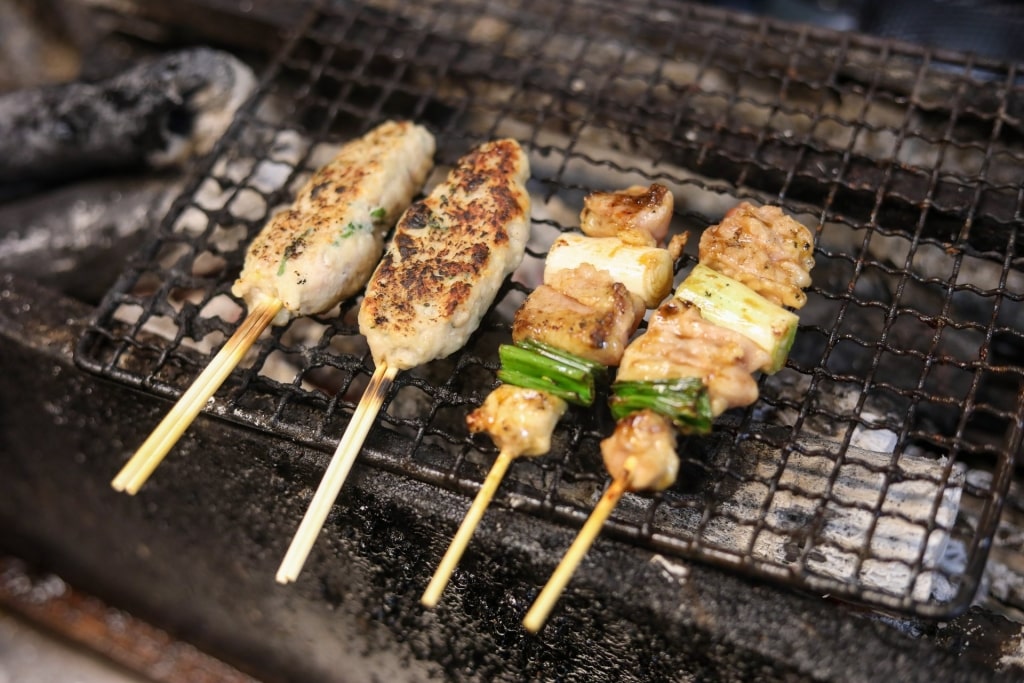
Yakitori
Sweet and savory skewered grilled chicken pieces are what yakitori is all about. Yakitori is one of Japan’s most appealing and appetizing street foods and is widely available across the country.
When sold by street vendors, yakitori is most often small pieces of breast meat dipped in a marinade just before grilling over charcoal. The result is hot, aromatic, and juicy chicken that’s eaten right off the skewer.
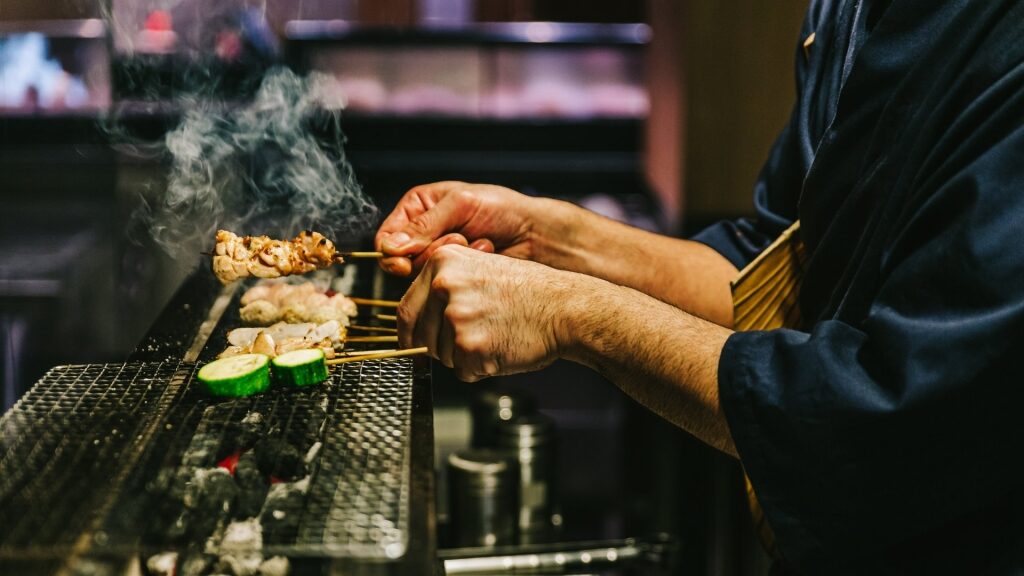
Yakitori
If your appetite for yakitori isn’t quite sated with a skewer or two on the street, plan a meal at a yakitori-ya, where you’ll enjoy a full range of skewered chicken, from leg meat to crispy chicken skin to livers, heart, and more.
It’s traditional to start with lighter fare, like chicken breast skewered with pieces of Japanese leek, quickly dipped in tare, a soy sauce-based mixture or more simply with shio, which is just salt. You can state your preference when you order or let the chef decide.
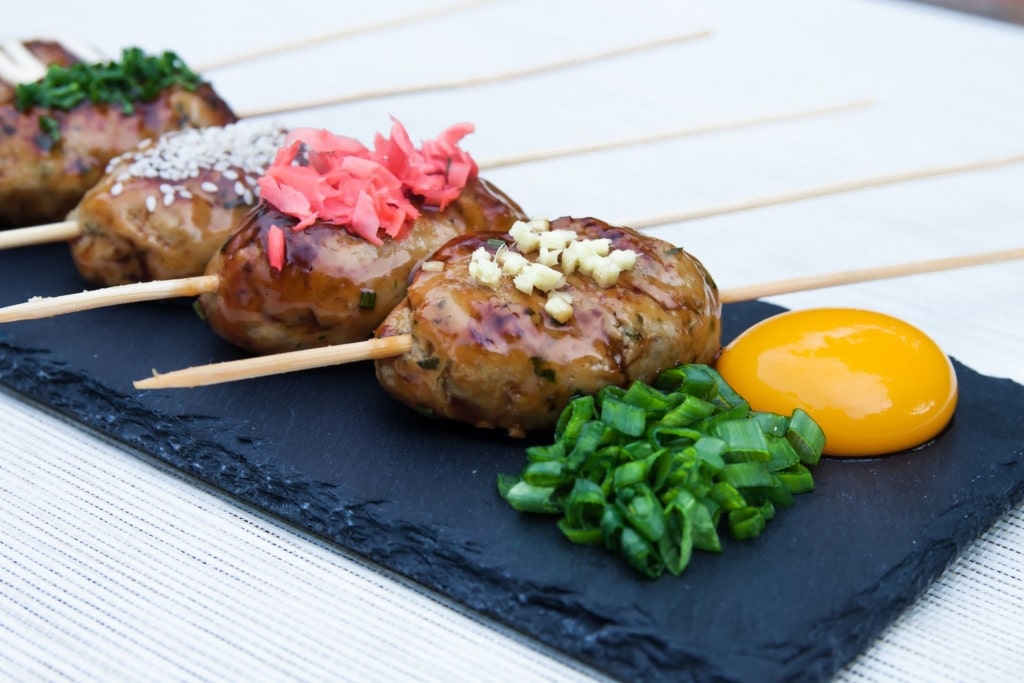
Tsukene
Move on to darker or heavier skewers like chicken meatballs served with egg yolk to dip in, then leg, thigh, liver, and heart until you’ve had your fill.
It’s perfectly acceptable to eat directly from the skewer, or you can attempt to remove the chicken from the skewer with your chopsticks. Either way, it is considered good manners to finish whatever you order.
Japanese beer is the preferred drink at a yakitori restaurant, though many have a complete bar.
Shabu-Shabu and Sukiyaki
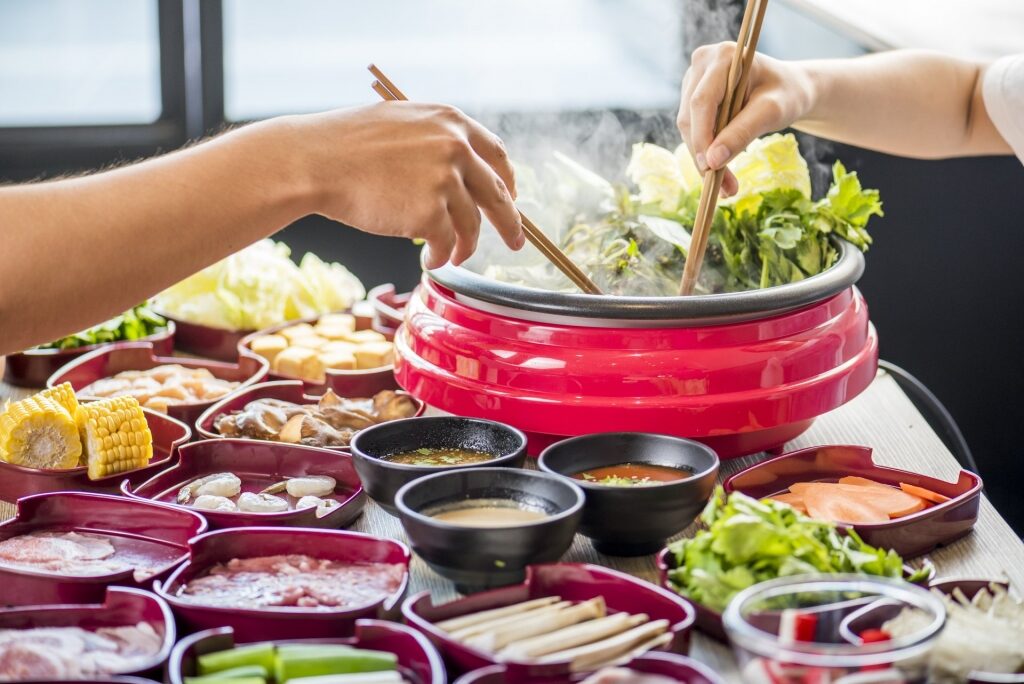
Shabu-shabu
Shabu-shabu, or “Japanese hot pot,” is a cooking method as well as a traditional Japanese meal. Today’s shabu-shabu restaurant meal has its origins in Osaka in the 1950s and is now a popular dining concept all over Japan.
A pot of seasoned hot broth sits in the middle of your table and serves as the cooking medium for thin slices of high-quality, well-marbled beef, tofu, and fresh vegetables such as mushrooms, onions, carrot, and cabbage, all beautifully presented on a tray, ready for cooking. When the meat is added to the pot, the resulting swish and sizzle sounds give the dish its name.
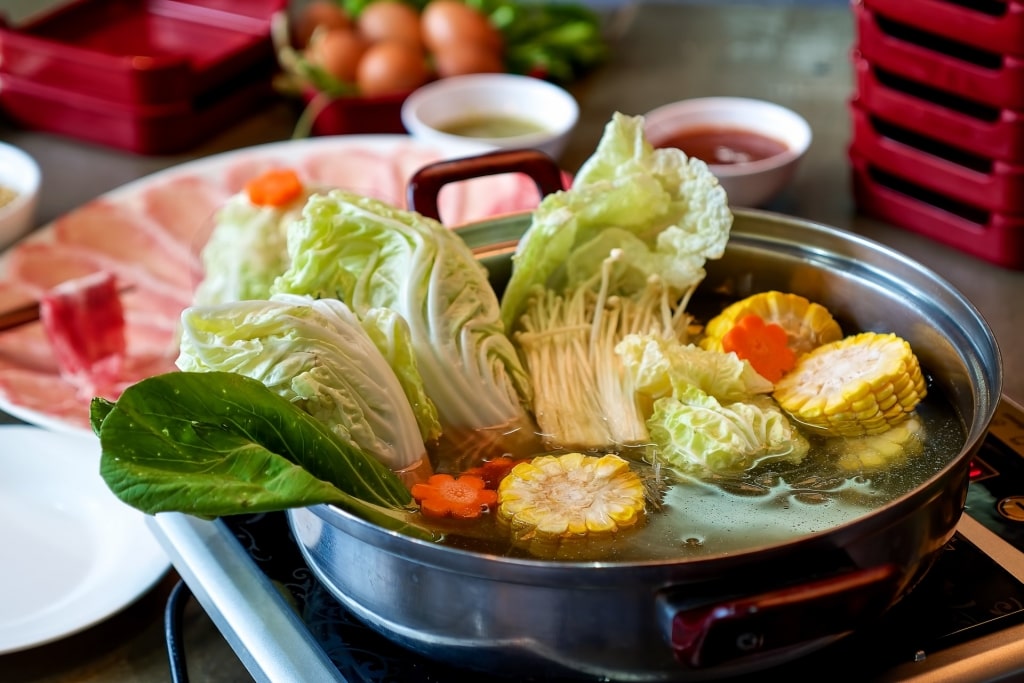
Shabu-shabu
Fragrant-cooked beef is then dipped into the accompanying sauces, such as ponzu (citrus), sesame, plum, or soy, and eaten with condiments like chili oil, grated daikon, and chopped scallions.
When meat and vegetables have been consumed, the final course consists of udon or ramen noodles or rice cooked in the melded flavors of the broth.
Unlike tempura or yakitori meals, shabu-shabu is a table experience meant to be enjoyed as a shared social meal experience.
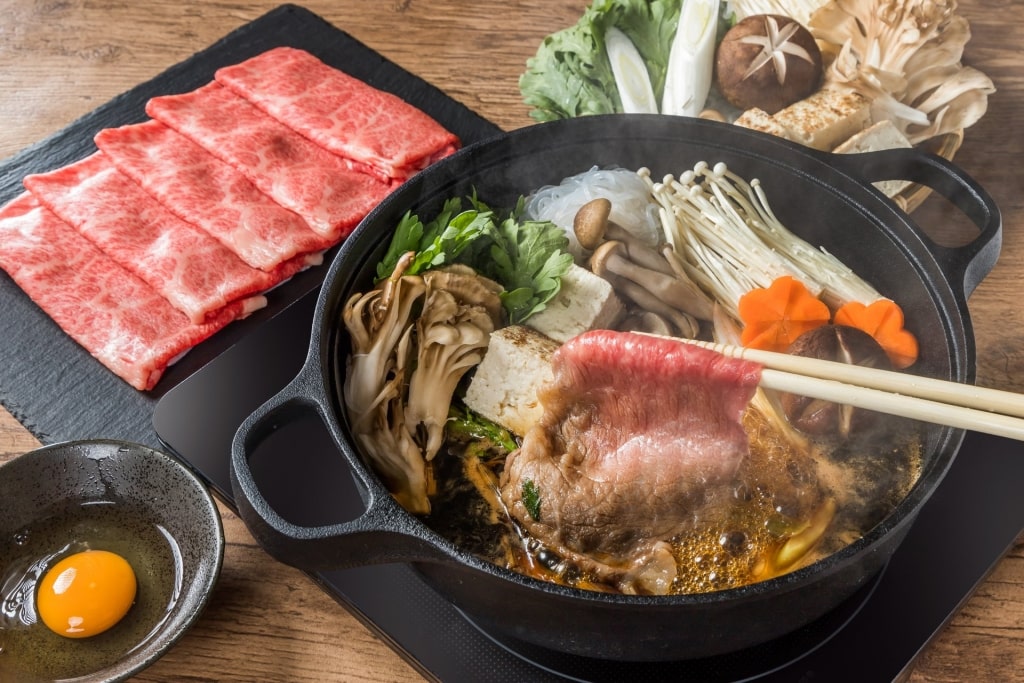
Sukiyaki
Sukiyaki is a similar cooked-at-table meal in which thin slices of beef, pork, or chicken is quick-cooked in a skillet with a soy-based sauce and vegetables. If you’re looking for an authentic Japanese meal with a familiar edge, sukiyaki fits the bill.
Kobe Beef
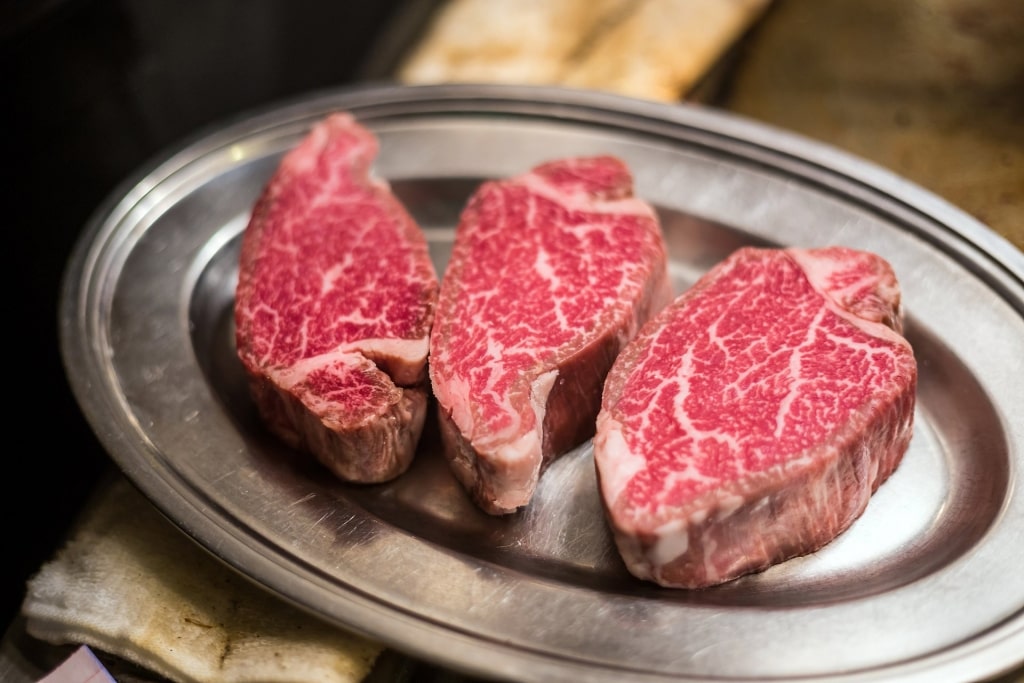
Kobe Beef
Valued by beef lovers worldwide for its flavor, tenderness, and melt-in-your-mouth marbled texture, Kobe beef is the best dish to eat in Kobe.
What makes Kobe beef so special? It comes from a special breed of black wagyu (cattle) born and bred only in the Hyogo Prefecture, where Kobe is located. The beef is certified for specific standards, including a marbling score, and only the highest scoring beef is awarded the “Japanese Chrysanthemum” seal and able to be sold as Kobe beef.
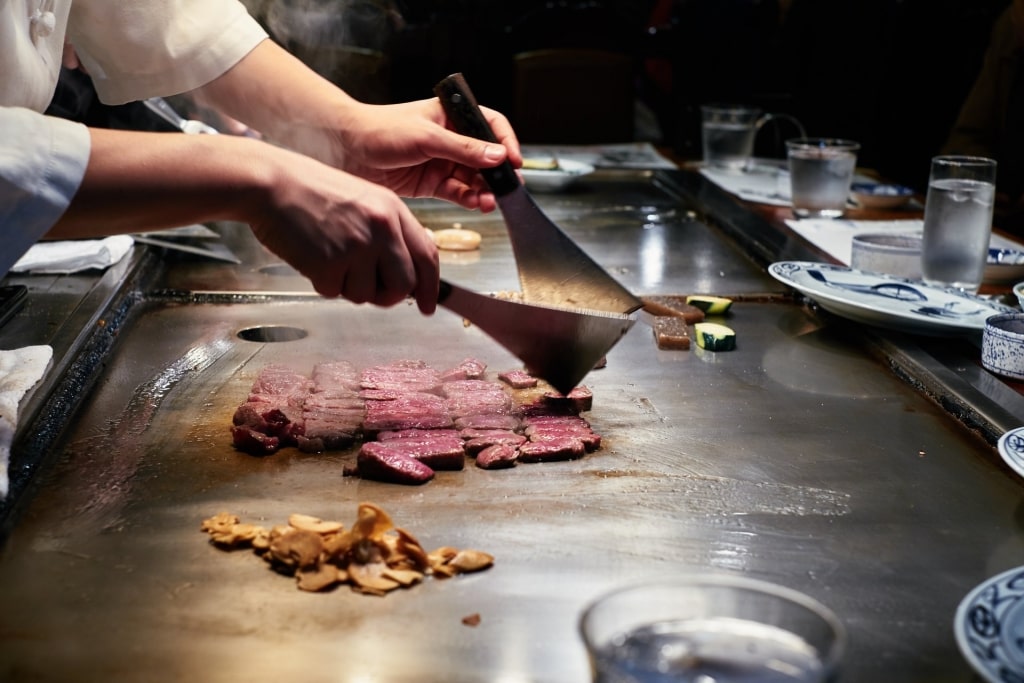
Kobe Steak
The best way to enjoy Kobe beef at its most succulent is to order a medium-rare steak at a teppanyaki restaurant. Similar to a restaurant you might visit at home, a teppanyaki restaurant is one in which your food is cooked in front of you over a gas-fired flat griddle. You can also visit a yakiniku and grill your own strips of Kobe beef over a charcoal or gas grill right at your table.
At teppanyaki and yakiniku, it’s customary for the Kobe beef steaks and roasts to be displayed, showing off the extraordinary marbling and creamy white fat layer of the meat.
Takoyaki
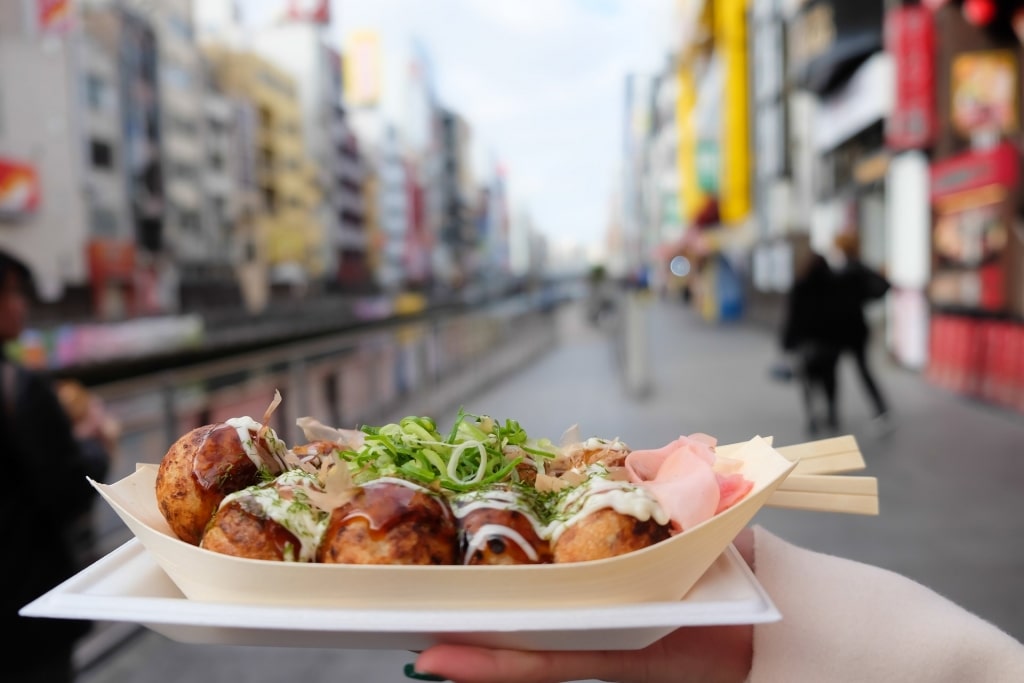
Takoyaki
It’s easy to know what to eat in Osaka: Just visit the bright and colorful Dotonbori area and stop for takoyaki (baked octopus balls). This popular street food that originated in Osaka in the 1930s is a fritter-type snack made with wheat flour, eggs, water, and pieces of octopus, pickled ginger, and green onion.
Takoyaki can also have other ingredients added, such as shrimp or other seafood. They are traditionally baked in a special hotplate that holds round indentations where the batter is placed, then turned until perfectly crisp and golden brown all around.
Takoyaki are placed in a single-serve paper tray and topped with takoyaki sauce, a sweet and spicy Worcestershire-type sauce, and sprinkled with bonito flakes, then served piping hot. You can add other toppings like green onions or mayonnaise.
A typical serving of these briny tasting, chewy snacks ranges from six to ten pieces that can each be eaten in one or two tasty bites.
Taiyaki
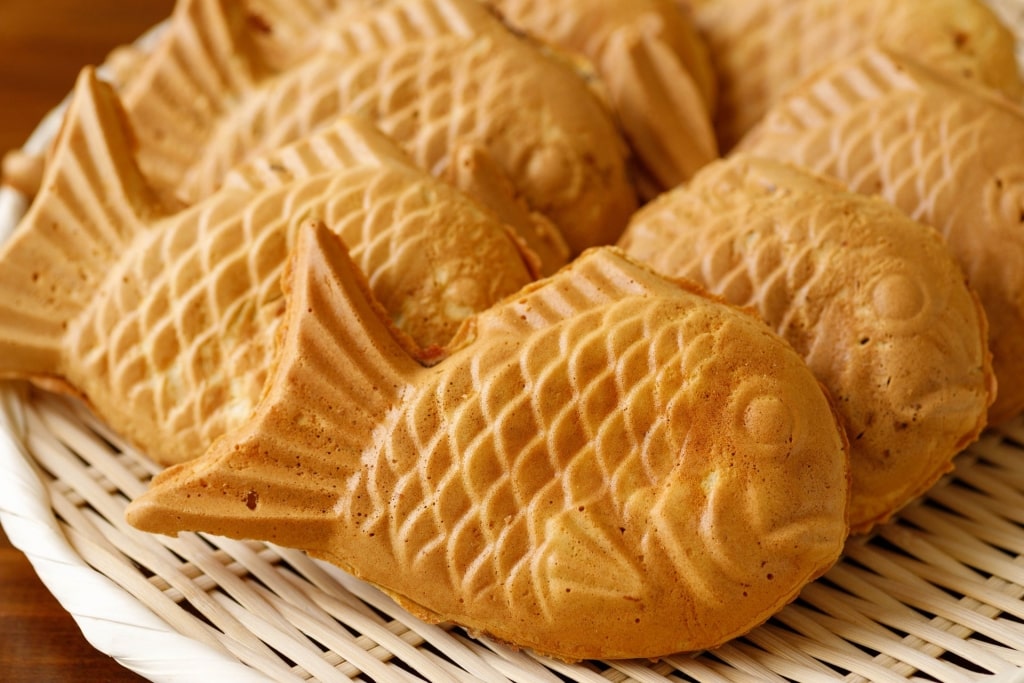
Taiyaki
Stand in a fast-moving queue in the old streets of Tokyo to enjoy one of the city’s most fun and Instagrammable foods. Taiyaki are crispy, fish-shaped pancakes bursting at the seams with filling that’s been a favorite Tokyo snack food since the Meiji era over 100 years ago.
Read: Tokyo 3-Day Itinerary
It’s been said the reason taiyaki, or red sea bream, are shaped like fish has nothing to do with the ingredients, but with the fact that the fish was expensive and the shape made folks feel like they were enjoying a warm and luxurious treat inexpensively, especially during the winter festival. Also, the red sea bream is considered a king among Japanese fish, and the fish shape is a symbol of prosperity and happiness.
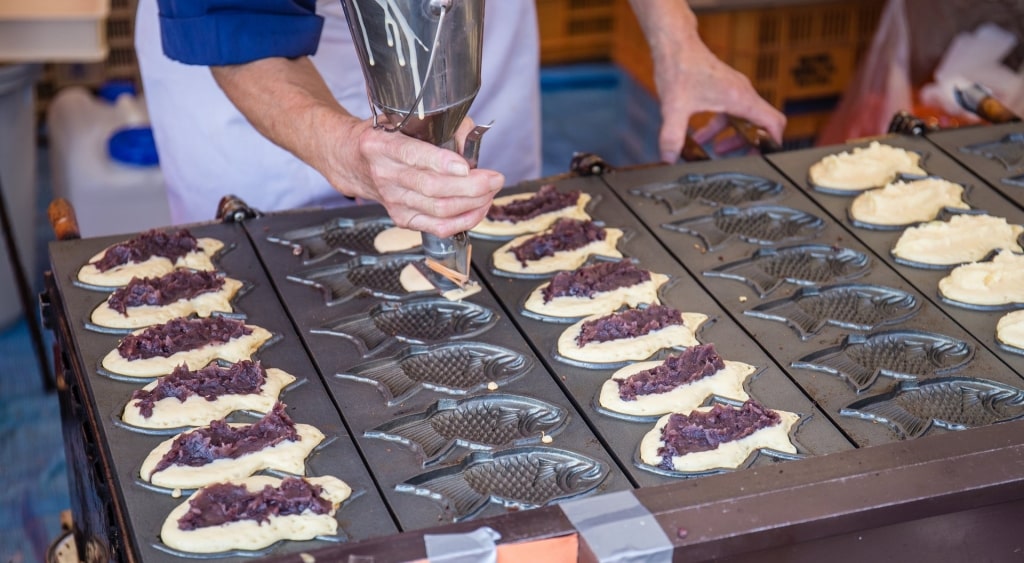
Taiyaki
Traditionally made with a standard pancake batter, poured into a fish-shaped mold and filled with sweetened azuki (red bean) paste, these popular treats are now available with custard or chocolate filling.
Matcha
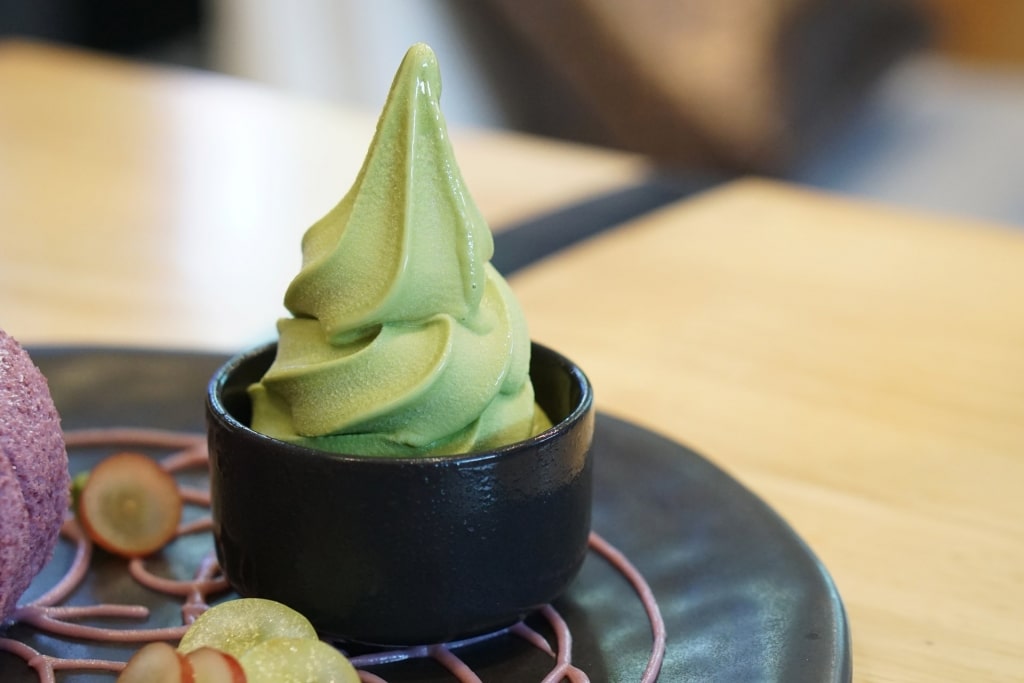
Matcha soft-serve ice cream
Matcha soft-serve ice cream, matcha mochi, matcha pancakes, and above all a carefully crafted cup of frothy matcha tea are some of the best things to eat (and drink) in Kyoto, the cultural capital of Japan.
Matcha, the highest grade of green tea leaves, carefully dried, then ground into a bright green powder, was first cultivated and drunk by Buddhist monks over 900 years ago. Kyoto is one of only two areas in Japan where the matcha tea plant is grown in specific shaded areas to protect the young green tea leaves.
Attending a ritual tea ceremony at a traditional teahouse in the Nishi district is definitely worth your time while visiting Kyoto.
Read: Two Days in Kyoto
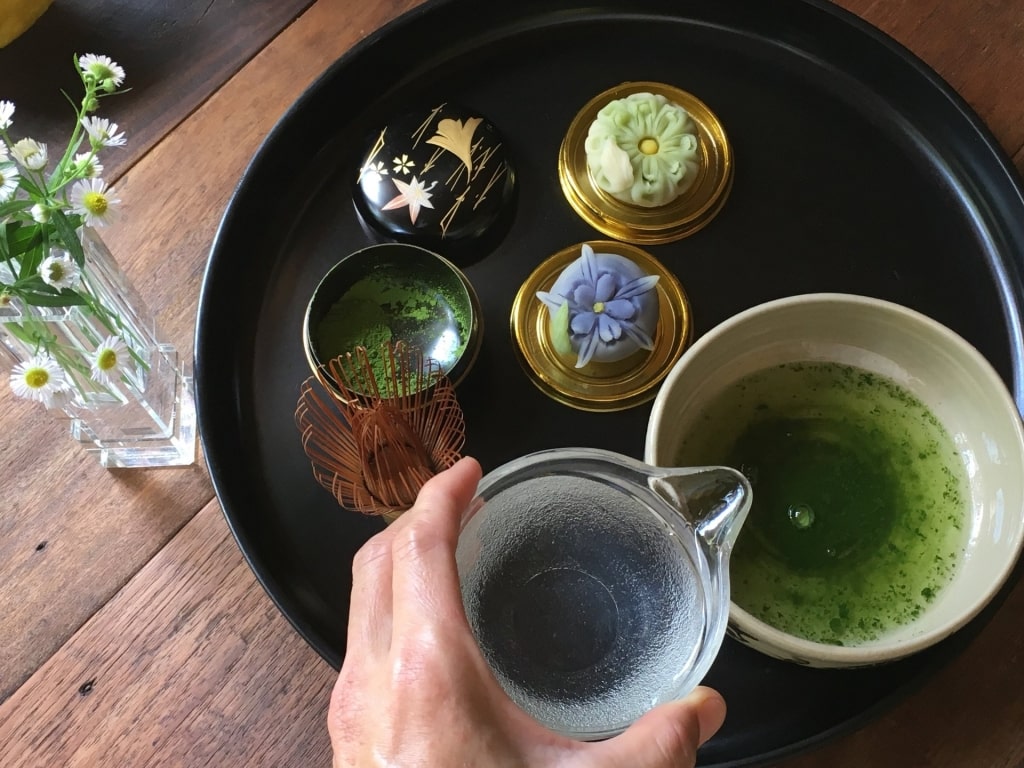
Matcha tea with Wagashi
Beyond the ceremonial aspects of matcha, it’s a go-to hot drink served at every Japanese teahouse, normally in a bowl and accompanied by a plate of wagashi (sweets). In summer, many teahouses serve shaved ice with sweet matcha syrup poured on top.
It is widely known to have health benefits including boosting metabolism, delivering high levels of antioxidants and fiber, aiding in concentration, and calming the mind.
Fujinomiya Yakisoba
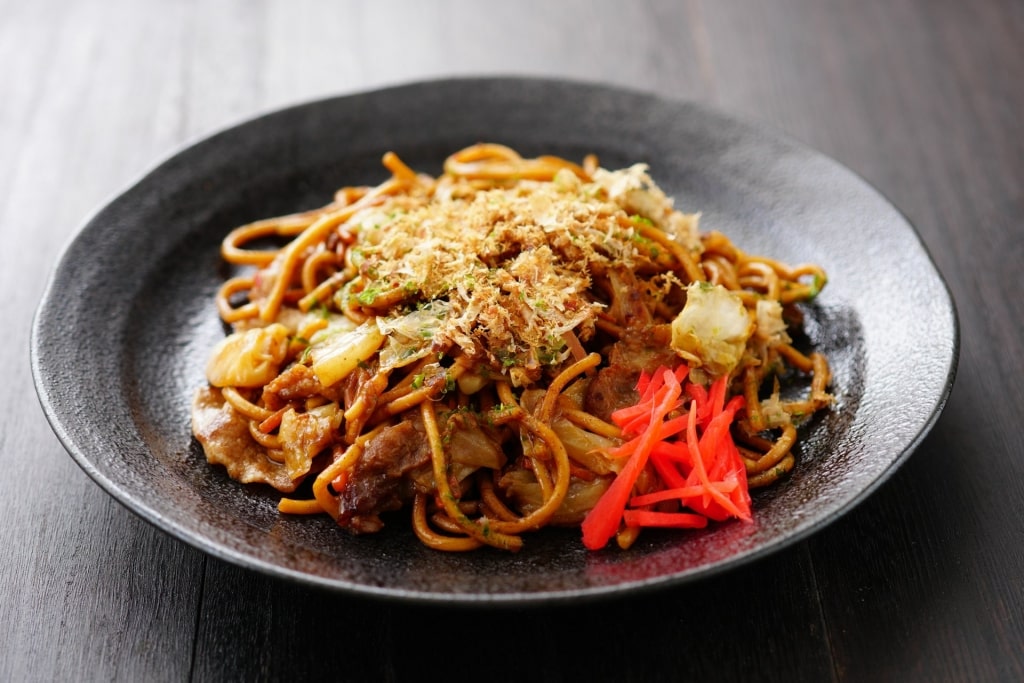
Fujinomiya Yakisoba
On a visit to the magnificent eternally snow-capped Mt. Fuji, the question of what to eat is easily resolved with a dish fondly known as the champion of stir-fried noodles, or fujinomiya yakisoba. This much-awarded dish a local favorite comfort food.
The dish is made with a firm, thick soba noodle with a chewy texture, fried separately and added to cabbage, meat fried in lard, then mixed with a sweet-sour sauce and sardine powder or bonito flakes. Pickled ginger and lots of chopped green onions top the dish.
It’s served with the equally famous Fujiyama beer made with the pure, natural waters around Mt. Fuji and classic German craft techniques.
One final thing that makes fujinomiya yakisoba a unique local dish is the noodles are made in only a few local noodle factories and not made or sold elsewhere in Japan.
Read: Famous Temples in Japan
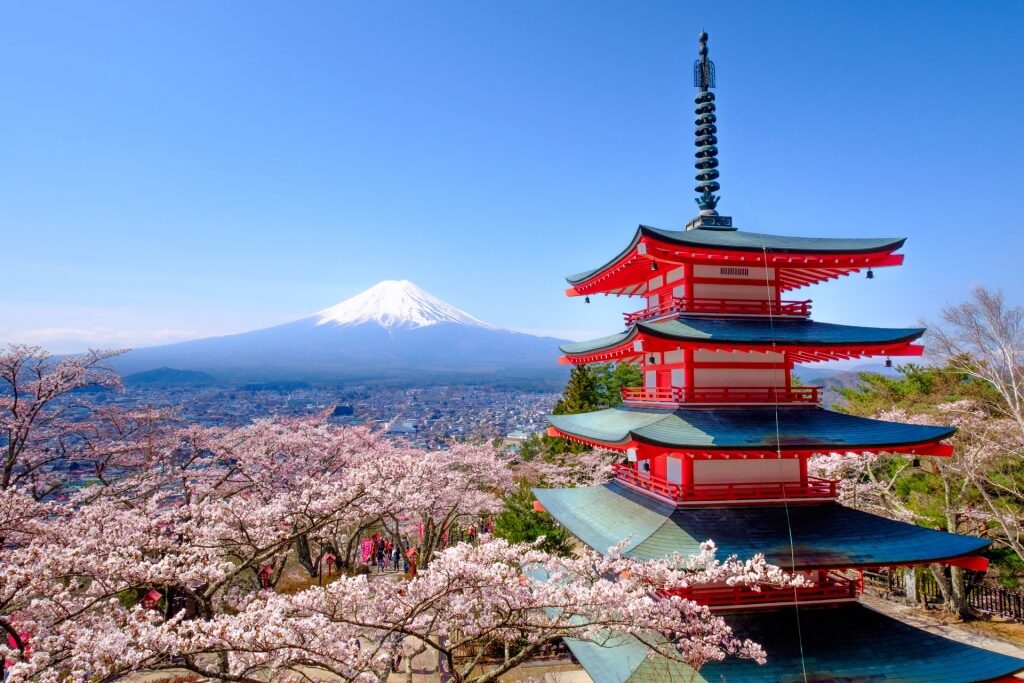
Mt. Fuji, Japan
Experience all of these delicious dishes and more on a cruise to Japan. Browse our cruise itineraries online or call one of our vacation specialists at 1-800-852-8086.
